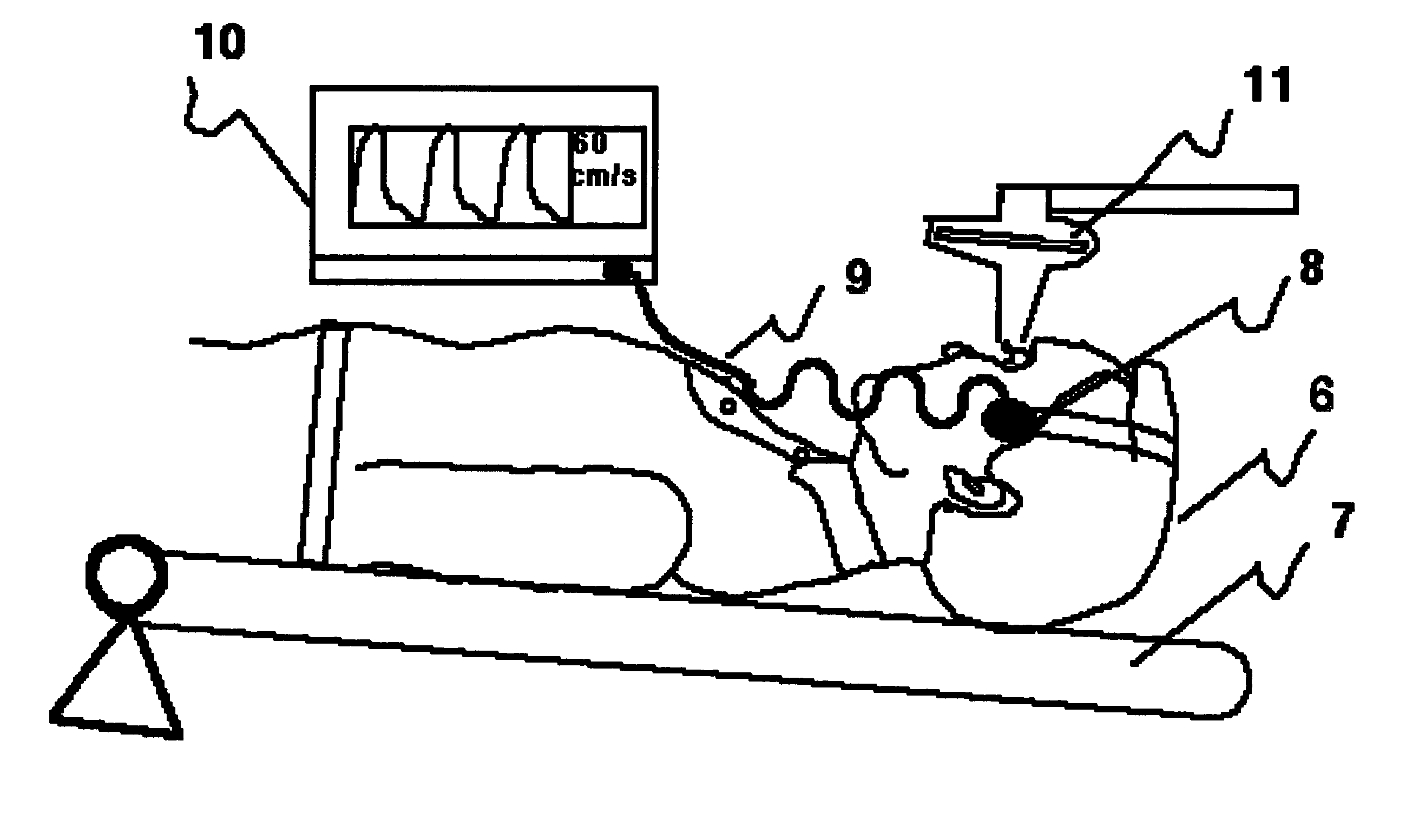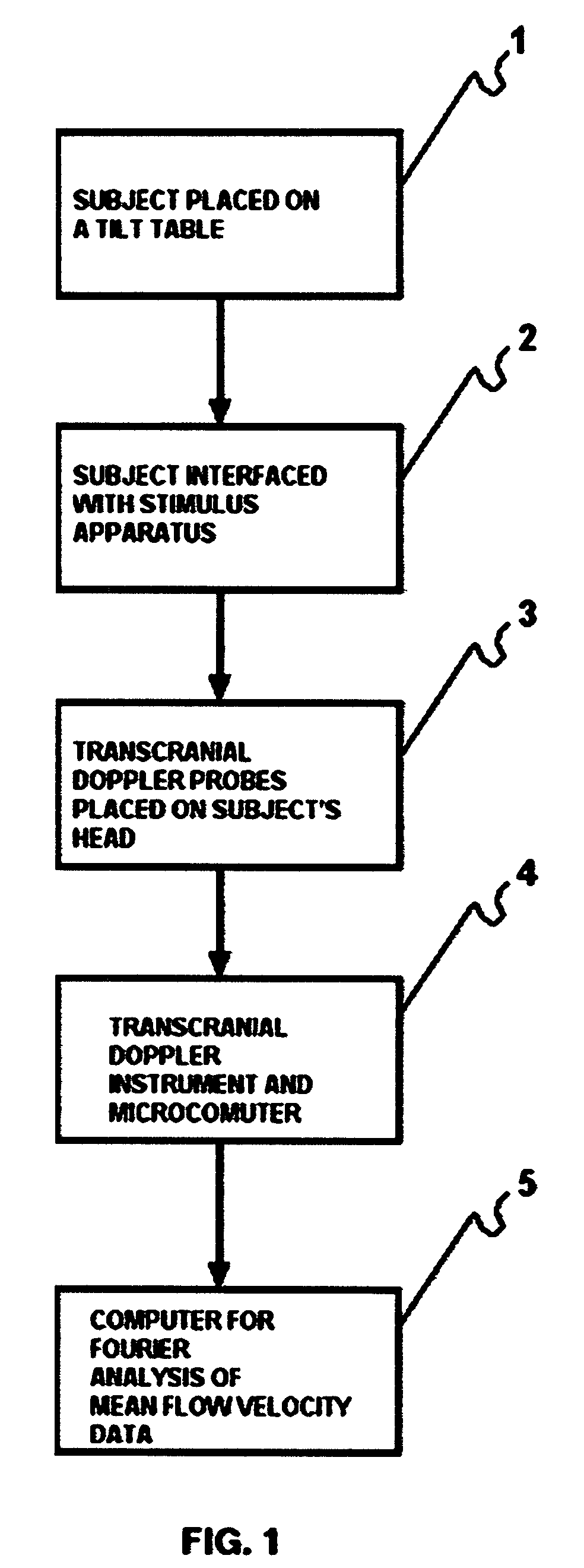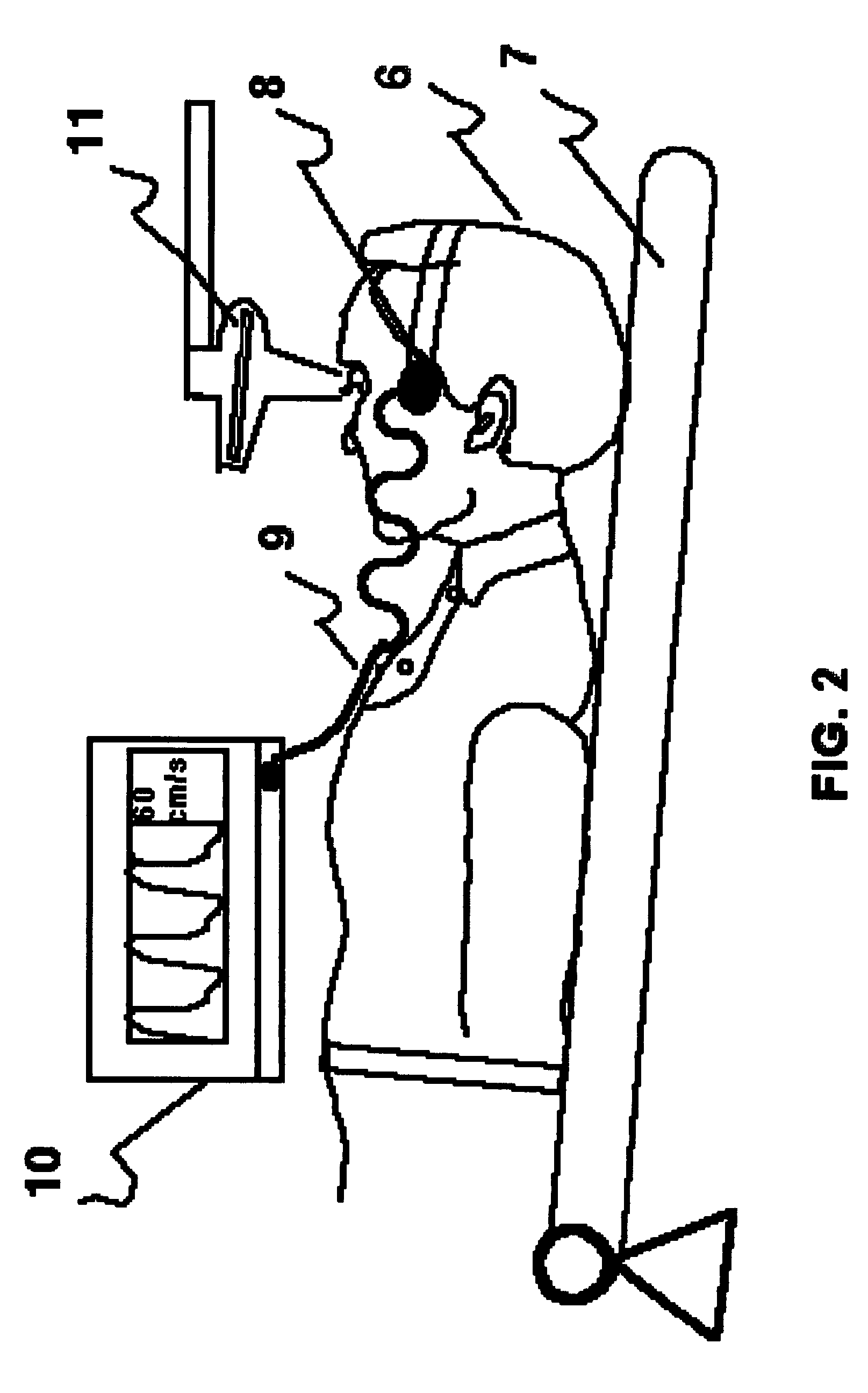Method for inducing and monitoring long-term potentiation and long-term depression using transcranial doppler ultrasound device in head-down bed rest
a transcranial doppler ultrasound and long-term depression technology, applied in the field of inducing and monitoring long-term potentiation and long-term depression using transcranial doppler ultrasound devices in head-down bed rest, can solve the problems of unclear role of the effect of head-down bed rest, lack of model in intact human brain, and inability to clarify i
- Summary
- Abstract
- Description
- Claims
- Application Information
AI Technical Summary
Benefits of technology
Problems solved by technology
Method used
Image
Examples
Embodiment Construction
[0052]The block diagram of the present invention is illustrated in FIG. 1. As shown therein, the subject is placed on a tilt bed 1. A number of devices could be modified to provide the required head up-tilt (HUT) at 30 degrees or HDR at −6 degrees. For example, a Backswing exerciser (Backtrack Div. Pasadena Calif.) could be modified as tilt bed. The subject is interfaced with a stimulus apparatus 2. Two 2 MHz transcranial Doppler probes of a transcranial Doppler device, that could be obtained from a company called DWL, Sipplingen, Germany, by way of example, are fitted on a head gear placed on the temporal bones 3, with ultrasound sample volumes focused in the main stem of major cerebral vessels, such as the RMCA and LMCA, respectively, by way of example. The real-time MFV measured by the TCD instrument and microcomputer 4, could be stored on the same or a separate PC 5 for statistical analyses including Fourier time series.
[0053]FIG. 2 shows a subject setup with the present inventi...
PUM
 Login to View More
Login to View More Abstract
Description
Claims
Application Information
 Login to View More
Login to View More - R&D
- Intellectual Property
- Life Sciences
- Materials
- Tech Scout
- Unparalleled Data Quality
- Higher Quality Content
- 60% Fewer Hallucinations
Browse by: Latest US Patents, China's latest patents, Technical Efficacy Thesaurus, Application Domain, Technology Topic, Popular Technical Reports.
© 2025 PatSnap. All rights reserved.Legal|Privacy policy|Modern Slavery Act Transparency Statement|Sitemap|About US| Contact US: help@patsnap.com



